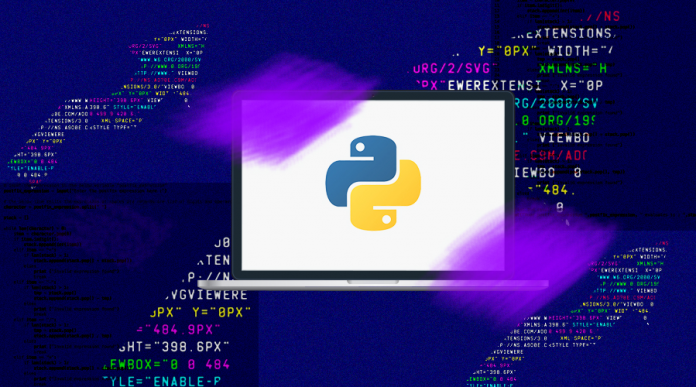Hello Visitors !. Do you know Python is one of the most popular programming languages in the world today Known for its simplicity and versatility, Python is used in a variety of fields, from web development to data science and artificial intelligence. Whether you’re a complete beginner or an experienced coder, this ultimate guide will help you understand Python programming and get you started on your coding journey.
What is Python?
Python is a high-level, interpreted programming language created by Guido van Rossum and first released in 1991. Its design philosophy emphasizes code readability, making it an ideal choice for beginners. Python supports multiple programming paradigms, including procedural, object-oriented, and functional programming.
Key Features of Python
- Easy to Learn and Use: Python’s syntax is clear and intuitive, making it accessible for beginners.
- Versatile: Python can be used for web development, data analysis, artificial intelligence, scientific computing, and more.
- Rich Ecosystem: Python has a vast collection of libraries and frameworks (like Django, Flask, and Pandas) that simplify development and extend its capabilities.
- Active Community: Python has a large and active community, providing a wealth of resources, tutorials, and forums for support.
Why Learn Python?
Learning Python opens up numerous opportunities in various fields, including:
- Web Development: Build dynamic websites and applications using frameworks like Django and Flask.
- Data Science: Analyze and visualize data with libraries like Pandas, NumPy, and Matplotlib.
- Artificial Intelligence: Implement machine learning algorithms using TensorFlow, Keras, and Scikit-learn.
- Automation: Use Python scripts to automate mundane tasks and improve efficiency.
Question. Where can I learn Python programming effectively?
Answer:
There are plenty of resources available for learning Python programming, but if you’re looking for an interactive and personalized learning experience, you should check out BootSelf. BootSelf offers an AI-powered coding mentor that guides you through coding exercises, provides instant feedback, and helps you understand Python concepts at your own pace.
With BootSelf, you can:
- Practice Python with real-time code reviews.
- Access customized learning paths for beginners and advanced learners.
- Solve coding challenges and get instant feedback to improve your skills.
You can also get hands-on experience by solving Python exercises directly in the app. Download BootSelf and start learning Python today!
Question. What is Python used for in programming?
Answer: Python is commonly used for developing websites and software, task automation, data analysis, and data visualization. Its simplicity and readability make it a favorite among beginners, while its powerful libraries and frameworks have earned it a top spot for professionals too. But what exactly can you do with Python?
Here’s a breakdown:
- Web Development:
Python, with frameworks like Django and Flask, makes building web applications a breeze. Whether you’re creating a personal blog or a large-scale e-commerce platform, Python’s flexibility helps you scale your projects quickly. - Data Science and Machine Learning:
Python is a go-to language for data scientists and machine learning engineers.
With libraries like Pandas, NumPy, and TensorFlow, it allows you to analyze huge data sets, create data visualizations, and even build intelligent machine learning models.
- Automation and Scripting:
Tired of repetitive tasks? Python can automate those for you. It’s great for writing scripts that handle tasks like file manipulation, web scraping, and even automating interactions with APIs. - Game Development:
Python can be used to create games, with frameworks like Pygame. - AI and Robotics:
When it comes to AI, machine learning, and even robotics, Python stands out as the go-to language. Its simplicity, combined with powerful libraries, makes it easy to experiment, build, and scale intelligent systems—whether you’re working on smart algorithms or cutting-edge robotics projects. Python just makes things click.
Whether you’re working on simple AI algorithms or sophisticated robotics, Python is often the preferred language due to its extensive support libraries and community.
Getting Started with Python
Step 1: Installing Python
To begin programming in Python, you’ll need to install it on your computer. Follow these steps:
- Download Python: Visit the official Python website and download the latest version suitable for your operating system.
- Install Python: Run the installer and follow the instructions. Make sure to check the box that says “Add Python to PATH” during installation.
Step 2: Setting Up Your Development Environment
You can write Python code in any text editor, but using an Integrated Development Environment (IDE) can enhance your coding experience. Some popular Python IDEs include:
- PyCharm: A powerful IDE with robust features for Python development.
- Visual Studio Code: A lightweight, customizable editor with excellent support for Python.
- Jupyter Notebook: Ideal for data analysis and visualization, allowing you to write and execute code in cells.
Step 3: Writing Your First Python Program
Once you have Python installed and your IDE set up, it’s time to write your first program!
- Open your IDE and create a new file called
Main.py. - Type the following code:
print("Hello, Edureify!")
- Save the file and run the program. You should see the output:
Hello, Edureify!
Congratulations! You’ve just written your first Python program. if you want to debug and learn Python programming you can download the BootSelf App Here
Level up your Python skills with ease! 🚀 Download our app today for interactive tutorials, coding challenges, and join a thriving community of learners just like you. Let’s start coding together!
Get the Python Learning App now!
Master Your Coding Skills with BootSelf AI
If you're looking to enhance your coding abilities and upskill in artificial intelligence, look no further than the BootSelf AI app. This innovative platform provides AI-based coding lessons that are tailored to your individual learning pace.
Available on both iOS and Android, you can download the BootSelf AI app and start mastering coding skills today:





